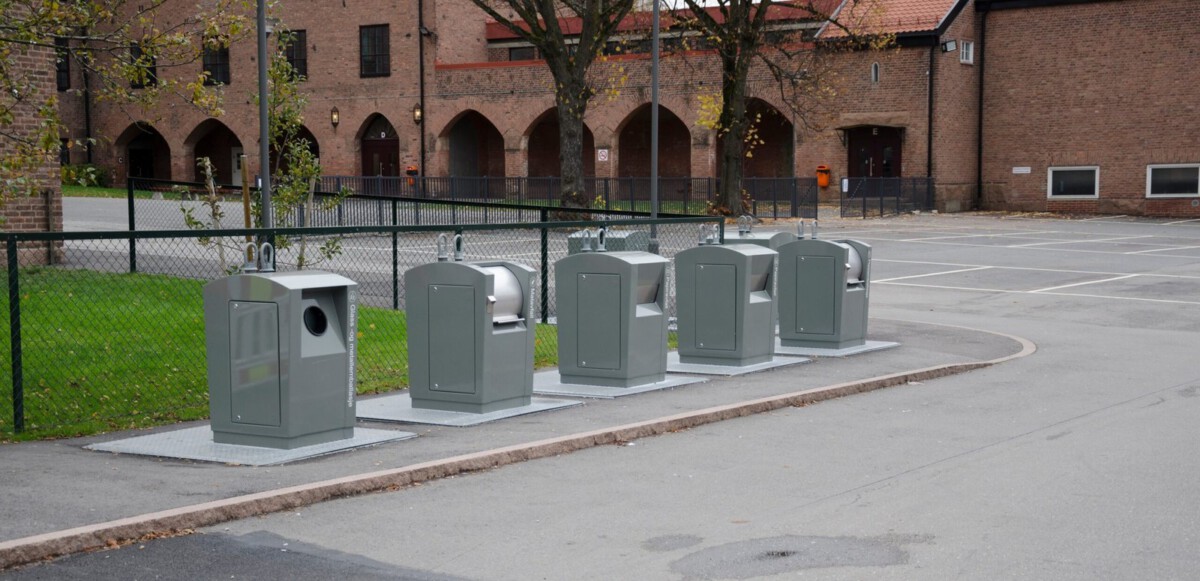Sweden: Where Recycling Becomes a National Sport

Walking through the streets of Stockholm, you might be shocked by the sheer absence of litter. Sweden has turned recycling into a way of life. According to the Swedish Environmental Protection Agency, the country recycles over 99% of its household waste, and landfill usage has been reduced by more than 50% since 2010. Waste-to-energy plants now power thousands of homes with what used to be trash. Public campaigns encourage everyone—from schoolchildren to retirees—to sort their waste and keep their neighborhoods spotless. Even visitors are often surprised by the crystal-clear lakes and tidy city parks. Sweden’s success comes from a mix of strong policy, high-tech infrastructure, and a culture where cleanliness is seen as a mark of respect for both neighbors and nature. The pride Swedes take in their environment is contagious, inspiring other nations to up their sanitation game.
Japan: High-Tech Toilets and Spotless Streets

If you want to see public sanitation taken to an art form, look no further than Japan. The country’s dedication to cleanliness is visible everywhere—from gleaming train stations to public restrooms that feel more like mini-spas. The Ministry of the Environment reported in 2024 that Japan maintains a 95% sewage treatment rate nationwide, one of the highest globally. Innovations such as toilets that sanitize themselves and public trash bins equipped with sensors are common. Even schoolchildren participate in daily cleaning routines, fostering a lifelong respect for public spaces. Strict rules about waste separation and recycling ensure that cities like Tokyo remain dazzlingly clean. Japan’s sanitation isn’t just about technology; it’s also deeply rooted in culture, where cleanliness is linked to social harmony and personal dignity.
Switzerland: Cleanliness Woven Into Daily Life

Switzerland’s reputation for orderliness extends beyond its famous clocks. The Swiss Federal Office for the Environment highlights that Switzerland consistently ranks among Europe’s least littered countries. Recycling is rigorously enforced, and public trash cans are everywhere, making it easy for citizens and visitors to dispose of waste properly. Swiss cities invest heavily in regular street cleaning, and fines for littering are strictly enforced. Public awareness campaigns focus on the importance of keeping both urban and natural environments pristine. Lakes and rivers are so clean that you can often see clear to the bottom. Many Swiss people see cleanliness as part of their national identity, and tourists often comment on the country’s almost storybook appearance.
Singapore: Strict Laws, Sparkling Streets

Singapore is often called the cleanest city in the world, and for good reason. The city-state’s National Environment Agency (NEA) enforces tough anti-littering laws, with hefty fines for anyone caught breaking them. Chewing gum is famously banned, and spitting in public can land you in trouble. Singapore’s waste management system includes advanced recycling and incineration facilities, keeping landfills to a minimum. The NEA also runs regular public education campaigns about hygiene and waste disposal. As a result, Singapore’s streets, parks, and waterways are remarkably clean, drawing praise from both locals and tourists. Cleanliness is seen as a source of national pride, and the government’s uncompromising approach ensures high standards are maintained.
Denmark: Sustainability at the Heart of Sanitation

Denmark leads the way in sustainable sanitation. The Danish Environmental Protection Agency reports that the country is a pioneer in turning wastewater into biogas, which is then used to heat homes and power buses. Danish cities regularly monitor beaches and harbors for pollution, keeping water quality among the best in Europe. Strict rules about recycling and composting are enforced, and most Danes are eager participants in keeping their communities clean. Public toilets are well-maintained, and street cleaning is a daily routine. There’s a strong sense of shared responsibility, with environmental education beginning in childhood. The result is a country that feels as fresh and inviting as its famous coastal landscapes.
Finland: Crystal Clear Water, Pristine Surroundings

Finland is often described as one of the world’s cleanest countries, and it’s not just a slogan. The Finnish Institute for Health and Welfare confirms that over 99% of Finns have access to clean drinking water, and almost all wastewater is efficiently treated before being released back into nature. Forests, lakes, and even city centers are remarkably litter-free. Finns take pride in their environment, with regular community clean-up days and environmental education in schools. Public sanitation facilities are plentiful and well-kept. The government continues to invest in water protection measures to ensure future generations enjoy the same high standards. Cleanliness is seen as a way of life, not just a government policy.
Norway: Waste Management as a Way Forward

Norway has transformed waste management into a model for other countries. The Norwegian Environment Agency reports that Norway recycles over 40% of its waste, with ambitious plans to push this even higher. Modern recycling plants process everything from plastics to electronics, and public sanitation facilities are spotless. The government runs frequent campaigns to promote hygiene and responsible waste disposal. Urban areas, from Oslo to Bergen, are known for their tidy streets and well-maintained parks. Norwegians see keeping their environment clean as part of their national character, and public participation in recycling programs is high. Norway’s approach balances innovation and tradition, ensuring both cities and countryside remain beautiful.
India: Progress Amidst Overwhelming Challenges

India’s struggle with public sanitation is immense. The World Health Organization’s 2023 report stated that around 600 million people in India still lacked access to proper sanitation facilities. Rapid urban growth has strained existing systems, leading to overcrowded cities with inadequate waste collection and disposal. Open defecation remains a challenge, despite government efforts like the Swachh Bharat Mission, which aims to build millions of toilets and promote hygiene education. Progress has been made—urban sanitation facilities have improved in some areas, and public awareness is growing. However, the scale of the problem, especially in rural regions, means the road ahead is long. The Indian government and international organizations continue to invest in infrastructure and education, hoping to bring about lasting change.
Nigeria: A Daily Battle for Cleanliness

Nigeria faces a daily struggle with sanitation, as highlighted by UNICEF’s 2023 report showing that only 28% of Nigerians have access to improved sanitation facilities. Rapid population growth and urban sprawl have left many areas without basic waste management services. Open defecation is common, contributing to the spread of disease. The government has launched initiatives to improve access to toilets and clean water, but funding and infrastructure gaps remain. Many communities rely on NGOs and international aid for support. Public awareness campaigns are slowly changing attitudes, but significant cultural and financial barriers persist. The challenge is especially acute in rural areas, where resources are even scarcer.
Bangladesh: Infrastructure Strained by Growth

Bangladesh, with its dense population and rapid urbanization, struggles to provide adequate public sanitation. The World Bank reported in 2024 that nearly 40% of Bangladeshis lack access to safe sanitation. Rivers and waterways are often polluted due to insufficient sewage treatment. The government, in partnership with NGOs, is working to build public toilets and improve waste collection systems, but progress is slow. Flooding and natural disasters further complicate sanitation efforts, regularly overwhelming existing infrastructure. Public education initiatives aim to promote hygiene, but resources are limited. The need for investment in sanitation infrastructure remains urgent, with millions still exposed to health risks from poor sanitation.
Contrasts in Sanitation: A Global Snapshot

Examining these ten countries offers a striking view of the world’s sanitation divide. On one end, nations like Sweden, Japan, and Singapore have turned cleanliness into a source of national pride, achieving remarkable results through innovation, education, and strict policy. On the other, countries such as India, Nigeria, and Bangladesh face enormous hurdles, where lack of resources, rapid population growth, and infrastructure gaps make progress slow and hard-won. The difference in public sanitation standards affects not only health but also economic growth and overall quality of life. Cleanliness is more than just an aesthetic value—it’s a foundation for dignity, safety, and a better future for all.








